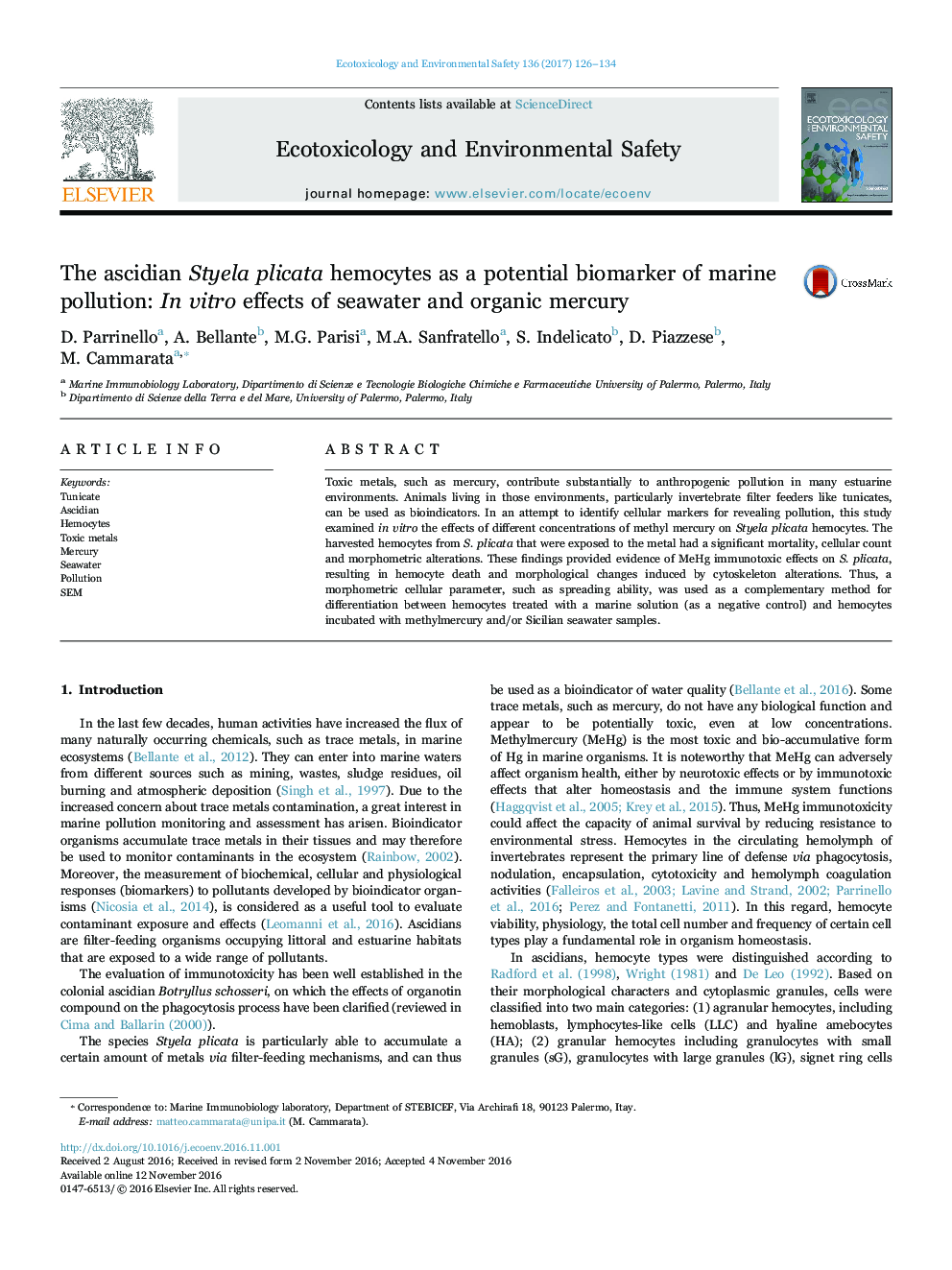| کد مقاله | کد نشریه | سال انتشار | مقاله انگلیسی | نسخه تمام متن |
|---|---|---|---|---|
| 5748124 | 1618928 | 2017 | 9 صفحه PDF | دانلود رایگان |

- Methyl mercury effects were evaluated in filter feeding Styela plicata.
- Organic MEHg affected hemocyte viability and cell morphology.
- The novel hemocyte morphology test (HMT) was applied to evaluate sea water effect.
- Methyl mercury and Sicilian seawater samples were tested with HTM.
- Hemocyte spreading test could be linked to the sea water quality.
Toxic metals, such as mercury, contribute substantially to anthropogenic pollution in many estuarine environments. Animals living in those environments, particularly invertebrate filter feeders like tunicates, can be used as bioindicators. In an attempt to identify cellular markers for revealing pollution, this study examined in vitro the effects of different concentrations of methyl mercury on Styela plicata hemocytes. The harvested hemocytes from S. plicata that were exposed to the metal had a significant mortality, cellular count and morphometric alterations. These findings provided evidence of MeHg immunotoxic effects on S. plicata, resulting in hemocyte death and morphological changes induced by cytoskeleton alterations. Thus, a morphometric cellular parameter, such as spreading ability, was used as a complementary method for differentiation between hemocytes treated with a marine solution (as a negative control) and hemocytes incubated with methylmercury and/or Sicilian seawater samples.
Journal: Ecotoxicology and Environmental Safety - Volume 136, February 2017, Pages 126-134